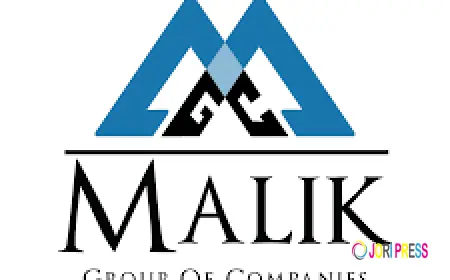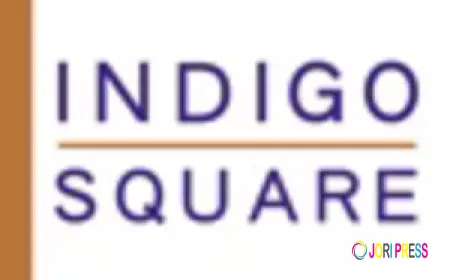Sharpening Africa’s edge in the diamond sector


With new polishing hubs, traceability standards, and policy reforms, the continent is seeking a bigger share of diamond wealth
SPECIAL REPORT | BIRD AGENCY | A new diamond polishing facility in South Africa has sparked discussions about beneficiation and ethical trade, as the continent seeks to capture more value from its mineral wealth. Finestar, an Indian diamond polishing company, recently opened a R300 million (more than US$17 million) plant on September 5 in the Gauteng Industrial Development Zone near OR Tambo International Airport.
“Finestar’s R300 million investment may look modest in scale, but symbolically it’s important. It shows how foreign players see South Africa not just as a source of rough stones, but as a viable hub for skills and value addition,” said Thandiwe Khumalo, an independent mining economist.
The plant employs 46 people, 29 of them South Africans trained on-site, according to company CEO Prince Mbetse.
“Training 29 South Africans in advanced polishing techniques creates skills that can ripple across the industry,” Khumalo added.
India’s involvement is not coincidental. India currently dominates the global cutting and polishing trade, handling over 90% of the world’s diamonds by volume. But rising labour costs at home and the push for provenance verification are encouraging Indian firms to establish a footprint closer to the source. According to India’s Gem & Jewellery Export Promotion Council (GJEPC), Indian companies have invested more than US$150 million across African beneficiation ventures since 2020, including facilities in Botswana, Namibia, Angola, and now South Africa. Out of the US$10 billion of rough diamonds imported into India yearly, 80% are believed to come from Africa, according to a 2024 research paper published on the Open Journal of Political Science.
“The expansion of Indian players into Africa is not about replacing Surat, but about creating hybrid value chains where rough is sourced and partially processed in Africa before finishing in India,” Khumalo explained.
Finestar South Africa CEO Prince Mbetse said the company was committed to social impact, noting that it had prioritised training and skills transfer for women and planned to expand community development programmes.
He added that sustainability was also a core focus, with measures such as renewable energy use, rainwater harvesting and efficiency upgrades aimed at reducing emissions and moving the plant toward carbon neutrality.
The investment from Finestar comes as global diamond markets face strong headwinds. In 2022, the global diamond jewellery market was valued at US$86.5 billion, according to Statista, with the US accounting for 53% of polished diamond demand. Yet, lab-grown stones already command about 25% of US sales, while natural diamonds from South Africa now face a 30% import tariff in that same market, according to Mineral and Petroleum Resources Minister Gwede Mantashe.
“With lab-grown diamonds already taking a quarter of US sales and tariffs squeezing margins, beneficiation in Africa is less about chasing high profits and more about building resilience into the sector,” Khumalo noted.
Despite these pressures, Mantashe framed the Finestar plant as proof that beneficiation can still deliver jobs, skills, and resilience.
“Beneficiation, value-addition and skills development are central to building a resilient and sustainable mining sector,” he said at the launch.
Finestar’s strategy leans heavily on traceability to differentiate natural stones. The company issues blockchain-backed certificates that record a diamond’s provenance and qualities, assuring buyers that each stone is ethically sourced. It was among the first polishers globally to deploy blockchain in this way, sourcing 100% of its rough diamonds directly from mining firms.
“Blockchain-backed certification is increasingly the price of entry into major jewellery markets where consumers want proof of ethical sourcing,” Khumalo said.
The Gauteng facility complements Finestar’s other cutting hubs in the United Arab Emirates, Belgium, Hong Kong, Japan, the US, Namibia, Botswana and India. The company says it plans to position South Africa and the wider Southern African Development Community (SADC) as a global hub for diamond trade and jewellery manufacturing.
“What’s interesting is that you now see a cluster forming. Namibia, Botswana, Angola, and now South Africa are all pushing beneficiation, which could eventually make SADC a recognised centre for polishing and jewellery manufacturing,” Khumalo observed.
Africa is the largest diamond-producing region in the world, accounting for 51% of rough output by volume and 66% by value in 2022, according to Kimberley Process data. Botswana, the Democratic Republic of the Congo, South Africa, Angola, Zimbabwe, Namibia, Lesotho, Sierra Leone and Tanzania are the continent’s leading producers. Yet, the costs of processing diamonds locally remain high.
“Cutting and polishing a natural rough diamond costs about US$10 per carat in India, US$17 in China, but more than US$50 in Africa,” according to the African Diamond Manufacturers Association (ADMA). Lack of infrastructure, bureaucratic blockages, and excessive fees raise costs, while political instability in some countries undermines investor confidence.
ADMA estimates Africa now has 28% more lapidary factories than it did a decade ago, but many still struggle to turn profits.
“Africa cannot and should not try to compete with India’s scale, but it can carve out a niche through branding, traceability, and ethical value chains,” ADMA noted in a recent interview with Rough&Polished.
Recent developments underscore both the opportunities and the limits. In August, South Africa’s cabinet approved participation in an international diamond marketing campaign, requiring companies to contribute 1% of their annual rough revenue to promote natural stones.
Angola, meanwhile, announced the discovery of a new kimberlite field, its first in more than 30 years, while reporting record output of more than 10 million carats in 2024. Botswana, by contrast, said it would cut production by 16% in 2025, citing weak global demand. Smaller producers are also moving downstream. In July, Ghana’s Precious Minerals Marketing Company inaugurated a diamond cutting and polishing centre worth US$480,000, designed to curb rough exports and retain value locally.
Industry-led initiatives are also expanding. The De Beers-Raizcorp Enterprise Development Project welcomed a new cohort of four South African jewellery enterprises in 2025, with earlier groups showing significant transformation: 60% women-owned and 80% black-owned.
These efforts reflect a continental drive to reposition Africa. Still, questions remain. “The lack of robust infrastructure fails to accelerate and encourage viable manufacturing,” ADMA’s president observed, adding that excessive bureaucracy, corruption, and civil instability still weigh heavily on competitiveness.
For many in the sector, traceability is the most promising frontier. “Enhanced traceability of natural rough diamonds will clearly distinguish them from lab-grown alternatives, ensuring consumers can make informed choices,” said Wellington Mpandi, ADMA’s Vice-President and traceability authority.
Still, Khumalo argued that beneficiation must be seen as part of a longer game. “Beneficiation is not a silver bullet, but it is a lever. The more Africa can polish, cut, design and brand its own stones, the more it moves from being a supplier of commodities to a maker of value,” she said.
****
SOURCE: Bonface Orucho, bird story agency




















































